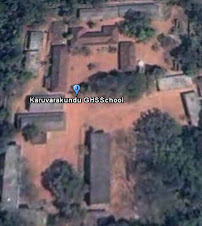
We all know that we are part of the environment we live in. And the solution to many environmental problems lie in our attitude towards environment. Be it awareness to keep our surroundings clean or the realisation to conserve natural resources by re-using and recycling wherever possible, they all are attitudinal. On the surface it looks simple. But changing the attitudes of 100 crore people is not going to happen overnight. The best way to attempt to bring about a change in the attitudes in the society is through children. They have no vested interests. They are impressionable. They are our future. They are the single most important influence in any family. In this context the National Green Corps Progarnme (NGC) launched.
The main objectives of this programme are to educate children about their immediate environment and impart knowledge about the eco-systems, their inter-dependence and their need for survival, through visits and demonstrations and to mobilise youngsters by instilling in them the spirit of scientific inquiry into environmental problems and involving them in the efforts of environmental preservation.
ACTIVITIESLIST OF SUGGESTED ACTIVITIES FOR ECO-CLUBS• Organise seminars, debates, lectures and popular talks on environmental issues in the school.
• Field visits to environmentally important sites including polluted and degraded sites, wildlife parks etc.
• Organise rallies, marches, human chains, and street theater at public places with a view to spread environmental awareness.
• Action based activities like tree plantation, cleanliness drives both within and out side the school campus.
• Grow kitchen gardens, maintain vermi-composting pits, construct water-harvesting structures in school, practice paper re-cycling etc.
• Prepare inventories of polluting sources and forward it to enforcement agencies.
• Organise awareness programmes against defeacation in public places, pasting posters in public places and to propagate personal hygiene habits like washing hands before meals etc.
• Maintenance of public places like parks, gardens both within and outside the school campus.
• Mobilise action against environmentally unsound practices like garbage disposal in unauthorised places, unsafe disposal of hospital waste etc.
OBJECTIVES• To make children understand environment and environmental problems.
• To provide environmental education opportunities for school children.
• To utilise the unique position of school children as conduits for awareness of the society at large.
• To facilitate children's participation in decision making in areas related to environment & development.
• To bring children into direct contact with the environmental problems facing the society they live in and make them think of solutions.
• To involve children in action based programmes related to environment in their surroundings.




























